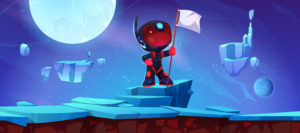Unlock a Thriving UI/UX Career: Jobs, Future Trends, and How to Start Designing Amazing Websites & Projects

In today’s digital-first world, UI/UX design has emerged as one of the most sought-after career paths. From creating seamless user experiences to designing visually appealing interfaces, UI/UX designers play a crucial role in shaping how we interact with technology. Whether it’s a mobile app, a website, or a software platform, the demand for skilled UI/UX designers is skyrocketing.
If you’re passionate about design, problem-solving, and technology, a career in UI/UX could be your calling. In this blog, we’ll explore the future of UI/UX design, the job opportunities available, and how you can get started on this exciting path.
Why UI/UX Design is the Future
Growing Demand for Digital Experiences
With businesses shifting online, the need for intuitive and user-friendly designs has never been greater. UI/UX designers are at the forefront of creating digital experiences that captivate users and drive engagement.
High-Paying and Rewarding Careers
UI/UX design is not just creatively fulfilling but also financially rewarding. According to industry reports, the average salary for a UI/UX designer in India ranges from ₹5-12 lakhs per annum, with experienced professionals earning even more.
Versatility Across Industries
UI/UXUI/UX skills are applicable across industries, including tech, healthcare, finance, e-commerce, and entertainment. Whether you’re designing a fitness app or a banking website, the possibilities are endless.
Continuous Innovation
The field of UI/UX is constantly evolving with advancements in technology like AI, AR, and VR. This means there’s always something new to learn and explore, making it an exciting career choice.
UI/UX Jobs: What Can You Do?
The UI/UX field offers a variety of roles, each with its own unique focus. Here are some of the most popular job titles:
UI Designer: Focuses on the visual aspects of a product, such as layout, typography, and color schemes.
UX Designer: Concentrates on the overall user experience, ensuring the product is intuitive and easy to use.
Interaction Designer: Designs how users interact with a product, including animations and transitions.
Product Designer: Combines UI/UX skills to oversee the entire design process, from concept to execution.
UX Researcher: Conducts user research to understand pain points and improve the product’s usability.
These roles are in high demand at top companies like Google, Amazon, Adobe, and startups worldwide.
How Students Can Work on Amazing Websites and Projects
Freelancing
Platforms like Upwork, Fiverr, and Toptal offer opportunities to work on real-world projects. Freelancing allows you to build your portfolio while earning money.
Internships
Many companies offer internships for students to gain hands-on experience. Look for internships in design studios, tech companies, or startups.
Collaborate with Peers
Team up with classmates or join design clubs to work on collaborative projects. This will help you learn teamwork and project management skills.
Participate in Hackathons
Hackathons are a great way to challenge yourself and work on innovative ideas. Many hackathons focus on UI/UX design, giving you a chance to showcase your creativity.
Contribute to Open Source
Many open-source projects need help with UI/UX design. Contributing to these projects can help you gain experience and build your reputation in the design community.
Conclusion
A career in UI/UX design is not just about creating beautiful interfaces; it’s about solving problems and enhancing user experiences. With the right skills, a strong portfolio, and a passion for design, you can work on amazing websites, apps, and projects that make a real impact.
If you’re ready to take the first step, consider enrolling in a UI/UX design course to build your skills and kickstart your career. The future of design is in your hands—start creating today!
Similar Articles
-

Unlock a Thriving UI/UX Career: Jobs, Future Trends, and How to Start Designing Amazing Websites & Projects 02-20-2025
In today’s digital-first world, UI/UX design has emerged as one of t
-

The Future of Game Art: Why It Matters and How to Get Started 02-20-2025
The gaming industry has evolved from pixelated screens to immersive vi
-

The Rise of the VFX and Animation Industry in India: A Gateway to Global Opportunities 02-19-2025
The VFX and animation industry in India has undergone a remarkable tra
-

Graphic Design Made Easy: Learn, Create, and Conquer the Digital World 02-18-2025
The Future of Graphic Design: Why It’s a Skill Worth Mastering In to
